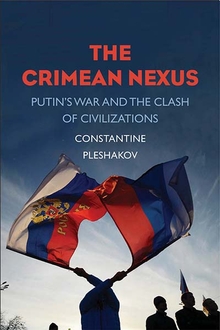This Fine Piece of Water
WARNING
You are viewing an older version of the Yalebooks website. Please visit out new website with more updated information and a better user experience: https://www.yalebooks.com
An Environmental History of Long Island Sound
Tom Andersen; Foreword by Robert F. Kennedy, Jr.
Long Island Sound is not only the most heavily used estuary in North America, it is also one of the most beautiful waterways, with picturesque seascapes and landfalls. But centuries of pollution and other abuse have gradually been killing off its marine life and have pushed the Sound to the brink of disaster. This fascinating book traces the history of the Sound and its use as a resource from the time of contact between the Native Americans and Dutch traders through the suburban sprawl of recent decades—and tells how a group of scientists and citizens has been working to save the Sound from ruin.
Tom Andersen begins by describing the dramatic events of the summer of 1987, when a condition called hypoxia (lack of dissolved oxygen in the water brought about by a combination of pollution and other factors) killed large numbers of fish and lobsters in the Sound. He discusses how scientists first documented and explained the development of hypoxia and how research and cleanup are now being carried out to restore the Sound. Interweaving current events, natural history, and human history, Andersen presents a cautionary tale of exploitation without concern for preservation.
Tom Andersen begins by describing the dramatic events of the summer of 1987, when a condition called hypoxia (lack of dissolved oxygen in the water brought about by a combination of pollution and other factors) killed large numbers of fish and lobsters in the Sound. He discusses how scientists first documented and explained the development of hypoxia and how research and cleanup are now being carried out to restore the Sound. Interweaving current events, natural history, and human history, Andersen presents a cautionary tale of exploitation without concern for preservation.
Tom Andersen is communications director, Connecticut Audubon Society, and covered the environment as a newspaper reporter for seventeen years. Robert F. Kennedy, Jr., is professor of law and director of the Environmental Litigation Clinic at Pace University, White Plains, New York, and chief prosecuting attorney, Riverkeeper, Garrison, New York.
“The Long Island Sound is a precious resource for Connecticut and New York residents. In This Fine Piece of Water, Tom Andersen presents a frank discussion of the Sound’s history, and issues a challenge to those of us who love this estuary to do all we can to preserve it for future generations. The book effectively outlines the case for repairing and restoring this fragile body of water.”—Congressman Christopher Shays (R-CT)
“[Rachel] Carson sounded the clarion call against pesticides and toxins in our environment. Now Tom Andersen has called us back to the barricades to save our dying estuaries.”—Robert F. Kennedy, Jr., from the foreword
"Tom Andersen has nicely wrapped 12,000 years of natural, social, and political history into this fine piece of work. I urge everyone with an interest in the natural and unnatural history of the Sound to read Tom’s book."—Soundkeeper Terry Backer
"Tom Andersen's background as a newspaper reporter shines through in this book, which is both well written and researched." —Hannah Gillelan, International Journal of Maritime History
“In the summer of 1987, a horrifying environmental disaster struck Long Island Sound. . . . Tom Andersen . . . tells the story of this crisis—what led up to it, how people reacted to it, what steps were taken to end it and prevent others, and how the construction lobbies fought an effective government response—in a series of crisply written, often riveting chapters. . . . It’s a tale of activism, greed, and bureaucratic equivocation, told succinctly and lucidly. . . . A superb example of environmental journalism. Thoroughly researched and elegantly written, it recounts a contemporary saga with nuance and high drama.”—Philip G. Terrie, New York History
“Andersen . . . writes vividly about the Sound and environs. . . . The compelling narrative is what makes the story so sad. By all accounts, the region was once a paradise of abundance.”—Polly Shulman, Newsday
“[Andersen’s] research into the Sound’s environmental history earns his book a place on the local naturalists’ bookshelves next to William Cronon’s Changes in the Land.”—Joshua Zaffos, Northern Sky News
"This is a murky story in the truest sense of the word, and Tom Andersen’s reporting sheds some useful light. May the work of those seeking to reinvigorate this glorious estuary meet with success."—Bill McKibben, author of The End of Nature, Maybe One, and Long Distance
Chosen as an Outstanding Academic Title for 2003 by Choice Magazine
ISBN: 9780300102871
Publication Date: April 1, 2004
Publication Date: April 1, 2004
274 pages, 6 x 9








